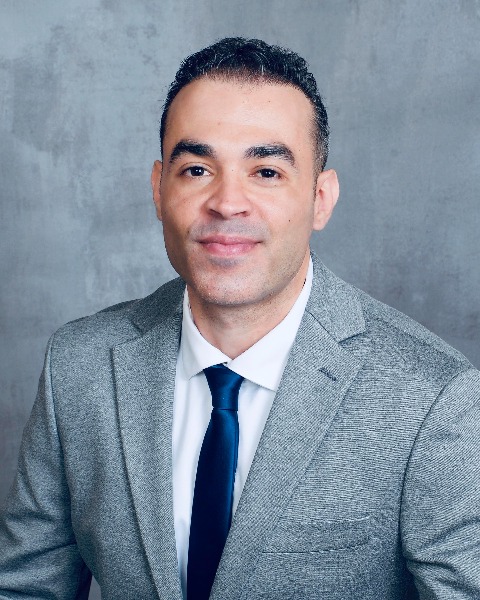Monday Poster Session
Category: IBD
P3392 - When the Scope Is Silent: Biopsy-Negative Perianal Fistulizing Crohn’s Disease Requiring Biologic Reinitiation
Monday, October 27, 2025
10:30 AM - 4:00 PM PDT
Location: Exhibit Hall

Wael T. Mohamed, MD (he/him/his)
University of Kansas School of Medicine
Wichita, KS
Presenting Author(s)
Wael T. Mohamed, MD1, Kyle Rowe, MD1, Nathan Tofteland, MD1, William J.. Salyers, MD, MPH2
1University of Kansas School of Medicine, Wichita, KS; 2University of Kansas School of Medicine - Wichita, Wichita, KS
Introduction: Fistulizing Crohn’s disease (CD) carries significant morbidity, often requiring long-term biologic therapy. A subset of patients presents with discordant disease phenotypes—minimal mucosal inflammation but clinically active perianal disease—complicating diagnosis and therapeutic decisions.
Case Description/
Methods: A 24-year-old male with previously diagnosed CD presented with ongoing perianal fistula symptoms, pressure-like abdominal pain, and odynophagia to solids. He had previously been on infliximab and methotrexate but had self-discontinued therapy years earlier. He reported daily dark green stools without hematochezia or steatorrhea. Physical exam revealed indwelling perianal setons.
Recent EGD showed mild gastric erythema with normal duodenal biopsies. Colonoscopy revealed a patent ileocolonic anastomosis and an inflammatory polyp without mucosal ulcerations. SES-CD was 0. Histologic samples from the ileum, colon, and rectum were all normal. MRI enterography showed a small posterior perirectal fluid collection within the levator ani, consistent with chronic fistulizing disease. He denied systemic symptoms. Lab testing showed normal liver enzymes, CBC, and negative infectious workup including C. difficile and QuantiFERON-TB Gold.
Despite normal endoscopic and histologic findings, his persistent symptoms, imaging, and perianal exam supported active fistulizing disease. After confirming normal thiopurine methyltransferase activity, methotrexate 25 mg IM weekly and infliximab 5 mg/kg were initiated. Trough levels and clinical response will guide future dose optimization.
Discussion: This case illustrates a key diagnostic dilemma in perianal CD: the absence of luminal inflammation does not preclude active perianal disease. Reliance solely on endoscopy or histology may delay treatment. Radiologic correlation and physical exam remain essential for disease assessment. Anti-TNF therapy remains the mainstay for fistulizing disease and may be warranted even in the absence of endoscopic activity.
Perianal fistulizing CD can persist with normal biopsies and endoscopic scores. Clinicians must integrate clinical, radiographic, and surgical findings to guide therapy. This case reinforces the need for individualized, multidisciplinary management in patients with complex CD phenotypes.
Disclosures:
Wael Mohamed indicated no relevant financial relationships.
Kyle Rowe indicated no relevant financial relationships.
Nathan Tofteland indicated no relevant financial relationships.
William Salyers indicated no relevant financial relationships.
Wael T. Mohamed, MD1, Kyle Rowe, MD1, Nathan Tofteland, MD1, William J.. Salyers, MD, MPH2. P3392 - When the Scope Is Silent: Biopsy-Negative Perianal Fistulizing Crohn’s Disease Requiring Biologic Reinitiation, ACG 2025 Annual Scientific Meeting Abstracts. Phoenix, AZ: American College of Gastroenterology.
1University of Kansas School of Medicine, Wichita, KS; 2University of Kansas School of Medicine - Wichita, Wichita, KS
Introduction: Fistulizing Crohn’s disease (CD) carries significant morbidity, often requiring long-term biologic therapy. A subset of patients presents with discordant disease phenotypes—minimal mucosal inflammation but clinically active perianal disease—complicating diagnosis and therapeutic decisions.
Case Description/
Methods: A 24-year-old male with previously diagnosed CD presented with ongoing perianal fistula symptoms, pressure-like abdominal pain, and odynophagia to solids. He had previously been on infliximab and methotrexate but had self-discontinued therapy years earlier. He reported daily dark green stools without hematochezia or steatorrhea. Physical exam revealed indwelling perianal setons.
Recent EGD showed mild gastric erythema with normal duodenal biopsies. Colonoscopy revealed a patent ileocolonic anastomosis and an inflammatory polyp without mucosal ulcerations. SES-CD was 0. Histologic samples from the ileum, colon, and rectum were all normal. MRI enterography showed a small posterior perirectal fluid collection within the levator ani, consistent with chronic fistulizing disease. He denied systemic symptoms. Lab testing showed normal liver enzymes, CBC, and negative infectious workup including C. difficile and QuantiFERON-TB Gold.
Despite normal endoscopic and histologic findings, his persistent symptoms, imaging, and perianal exam supported active fistulizing disease. After confirming normal thiopurine methyltransferase activity, methotrexate 25 mg IM weekly and infliximab 5 mg/kg were initiated. Trough levels and clinical response will guide future dose optimization.
Discussion: This case illustrates a key diagnostic dilemma in perianal CD: the absence of luminal inflammation does not preclude active perianal disease. Reliance solely on endoscopy or histology may delay treatment. Radiologic correlation and physical exam remain essential for disease assessment. Anti-TNF therapy remains the mainstay for fistulizing disease and may be warranted even in the absence of endoscopic activity.
Perianal fistulizing CD can persist with normal biopsies and endoscopic scores. Clinicians must integrate clinical, radiographic, and surgical findings to guide therapy. This case reinforces the need for individualized, multidisciplinary management in patients with complex CD phenotypes.
Disclosures:
Wael Mohamed indicated no relevant financial relationships.
Kyle Rowe indicated no relevant financial relationships.
Nathan Tofteland indicated no relevant financial relationships.
William Salyers indicated no relevant financial relationships.
Wael T. Mohamed, MD1, Kyle Rowe, MD1, Nathan Tofteland, MD1, William J.. Salyers, MD, MPH2. P3392 - When the Scope Is Silent: Biopsy-Negative Perianal Fistulizing Crohn’s Disease Requiring Biologic Reinitiation, ACG 2025 Annual Scientific Meeting Abstracts. Phoenix, AZ: American College of Gastroenterology.
